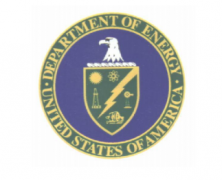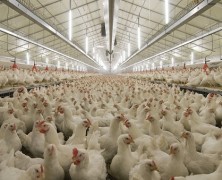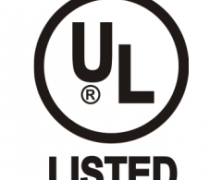It seems every day the LED industry is crossing new boundaries, reaching new thresholds, and brightening an expanding horizon. Adding one more reason for optimism, we’d like to share news about the latest developments in integrated daylight harvesting with LEDs. Integrated LED/daylight systems use sensors to assess how much natural light is entering a room, adjusting the LED system accordingly to reach a desired light level. Basically, these integrated lighting systems improve indoor lighting systems by optimizing artificial light in combination with natural light. The benefit of this system is that it significantly reduces business and consumer energy consumption costs, while greatly improving quality and functionality over conventional lighting set-ups. On their own, high quality LED lights already produce light 80% more efficiently than incandescents. Conventional incandescents actually waste 80% of the energy they require by producing heat rather than light. On this basis alone, it’s clear that LEDs present a huge opportunity for energy savings. With electricity production as the single largest contributor to CO2 emissions, accounting for 38% of U.S. emissions from 1990-2012, the reduction in usage afforded by LED lighting has an enormous environmental impact. But by using natural lights when possible, capitalizing on integrated daylight harvesting with LEDs, the already astonishing energy savings of this revolutionary lighting technology are even greater. Intelligent controls represent one of the greatest advancements brought to us by LED lighting systems. Through digital programming and networked management, LED lighting systems can easily be adjusted to meet predetermined factors. LEDs are superior to CFLs for networked management because they can be turned off and on easier, and can also be finely adjusted. Not only that, but the quality of light produced by many LEDs is actually closer to sunlight than most CFLs, which is another reason people are turning...
Program LED Strip Lights To Save Money...
posted by Flexfire LEDs
Installing LED lights in your business, warehouse or home is the first step toward realizing a dramatically lower lighting bill. The next step is to program LED strip lights to connect with occupancy sensors, timers and smart controls to maximize the greatest savings possible. As demand for green technology and efficient use of resources continues to grow, networked LED lights have become a crucial component in the modern energy retrofit. Energy efficiency investments could total $959 billion from 2014 to 2023, according to forecasts by Navigant Research. One thing is for sure: when it comes to effective ways to save energy on your lighting bill, LED-based lighting systems are impossible to beat. To start with, LEDs are incredibly efficient. Thomas Edison’s incandescent lightbulb, which brought electric light to the 20th century, produces just 16 lumens per watt. In comparison, most commercially available LEDs produce anywhere from 60 to 100 lumens per watt. But the efficiency of LED technology doesn’t end at the diode; its ultimate energy-saving superiority lies in its advanced control capabilities. Using LED-based automated systems, lights can be programmed to turn on and off automatically when people enter a room. Further, dimming and other advanced features can be controlled externally via smartphones or software connected to the internet. This networked management is possible because LEDs can be switched off and on digitally, and can easily be finely adjusted for both brightness and color temperature. Highly advanced LED-based lights can even be tuned to correspond to natural sunlight entering the room in a method of lighting known as daylight harvesting. Advanced daylight harvesting uses sunlight entering a room from windows and skylights and adjusts the LED lighting system to automatically add the necessary light to meet the room’s predetermined brightness level. Changing to LED lighting...
$4 Billion DOE Loan Program Includes LED Lighting Projects...
posted by Flexfire LEDs
The U.S. Department of Energy (DOE) has announced a $4 billion loan guarantee program to lower greenhouse gas emissions in the United States. LED lighting projects will qualify for the program. To qualify for the loans, projects must meet one of the following requirements: renewable energy systems; efficient electrical generation, transmission and distribution technologies; or efficient end-use energy technology (LEDs qualify as an efficient end-use energy technology). Applicants should have a project that is market-ready, replicable and would not likely be fully financed on a long-term basis by commercial banks. The DOE loan program is primarily geared toward renewables. LEDs are increasingly being incorporated with renewable technologies such as solar energy, and are helping to make renewable technologies more viable. The efficiency and reduced costs of solar-powered LEDs means they have already started to outperform electrical grid wiring in applications such as road and bus shelter lighting all the way from Boston to Abu Dhabi. The primary opportunity for LED lighting in this federal loan guarantee program lies in its compliance with the efficient end-use category. LEDs use 80% less energy than standard incandescent lighting. Not only that, but the advanced programing capabilities and rapid “on/off” switching of LEDs lend themselves to home automation projects and use in intelligent lighting projects aimed to reduce energy usage. LEDs are more efficient than other light sources because the vast majority of energy they use is transferred into light rather than heat. With an estimated 17% of the total energy used in commercial and residential sectors in 2012 going to lighting, the potential for LED energy savings across the nation is enormous. Initial applications for the federal guaranteed loan programs are due October 1, 2014, along with a $50,000 fee for the first phase of the DOE loan guarantee...
The Benefits Of Poultry LED Lighting...
posted by Flexfire LEDs
Chickens raised using an intelligent poultry LED lighting system have been found to produce higher quantity and quality of eggs, develop into maturity at a faster rate and enjoy an improved standard of health as compared to chickens raised under traditional light sources. Using LED-based technology chicken farmers can: Lower lighting costs Increase musculoskeletal development and weight gain Induce earlier maturity for hens destined to lay eggs Increase egg output and quality Regulate reproduction cycles Increase length of reproductive life Furthermore, farmers can adjust the color of the LED lights to promote certain outcomes. For example, using red light, farmers were able to stimulate sexual activity and reduce the amount of feed necessary to produce each egg — even though there was no difference in the size, or quality of the egg. The red LED lights were able to increase egg production by up to 38 per hen while decreasing food consumption by 20 percent. Green lights promotes chicken growth at early stages of development, while blue light promotes growth later along the life cycle of the chicken. Blue and green light improved feed conversion (the efficiency at which an animal converts animal feed into desired output such as eggs or meat) by up to 4%, and therefore reduced cost per pound of the chicken by up to 3%. Why is Poultry LED Lighting Superior to Traditional Poultry Lighting? Visible “white” light is actually composed of a range of colors, which can be viewed by refracting light through a dispersive prism. Incandescents, the most common form of poultry barn lighting, are missing many critical portions of the full spectrum found in sunlight. For instance, an incandescent bulb produces a highly diminished amount of both greens and blues. CFLs produce only narrow bands of color in...
LED Lighting Certifications: What Do They Mean?...
posted by Flexfire LEDs
While consumers are learning more about LED lighting, there are still many questions to be answered. Many LED products lack minimum safety, environmental and performance standards, leaving consumers unsure about product reliability. Thankfully, there are a number of recognized LED lighting certifications that consumers can rely upon. Let’s take a look at some of these certifications, and what they actually mean for consumers. UL Listed UL (Underwriters Laboratories) is an American safety and consulting company offering services in 104 countries worldwide. Established in 1894, UL first gained recognition by drafting safety standards and conducting safety analysis for electrical devices and components as the rise of residential electricity transmission made electronics ubiquitous in American households. As an LED lighting certification, UL Listed means that UL has tested representative samples of the product and determined it meets UL’s requirements based on its published Standards for Safety. The safety certification may also include additional information, meaning the product is UL Listed for Canada and the U.S. The UL logo used alone on packaging means the product and all its components have successfully passed UL examination as a working unit. LED lights that are UL Listed are safe for use in your home or business. Here is the UL Listed Website if you’d like to read more. CE Marking The CE mark is mandated for certain products sold within the European Economic Area, enabling freedom of movement in the European market. This marking means that the manufactured product meets EU safety, health and environmental standards that have been stipulated by legislation. Products demarcated with CE are not necessarily produced in Europe, but the marking means they can legally be sold there. All LED lights sold in Europe must carry the CE mark, which is often awarded by authorized third party organizations....










